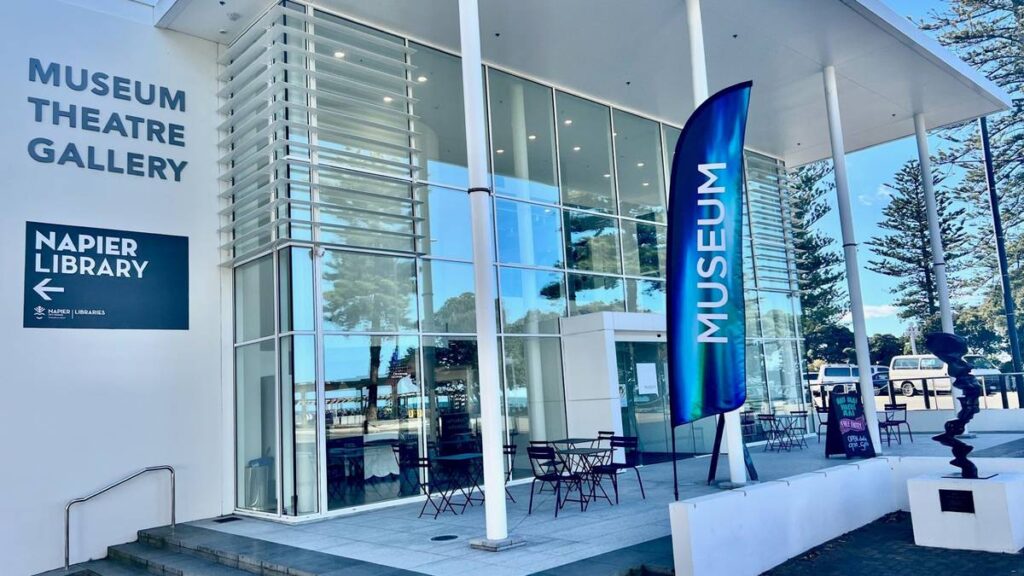With next week being Te Wiki o te Reo Māori it seems a good opportunity to consider this heru in terms of its name and the language used to describe it.
As you’d expect, that brought up some interesting results, affirming for this Pākehā writer that to learn te reo Māori is to learn about te ao Māori (Māori world view).
Made in whalebone and paua, objects of this type are described in official New Zealand websites as “heru (ornamental hair comb)”. And while it certainly is much more than a comb, “ornamental” in a Māori context I think is a tricky term.
Ornamentation for its own sake in te reo Māori is not really a thing, so finding a general word to use for “ornamental” or “decorative” is not really easy, or possible.
In te reo Māori there are specific words related to various forms of artistic expression. Terms such as “whakairo” encompass different aspects of ornamentation, without corresponding directly to the English term “ornamentation”.
Design elements used in whakairo such as the haehae, rauponga and pakaki are not merely decorative, but a system or language for storytelling. The importance of the story and relevance to its context are intrinsic to the object’s value.
/cloudfront-ap-southeast-2.images.arcpublishing.com/nzme/7ID2DBP2DJGZJEJS6LNO4IVV2E.jpeg)
So this Māori object when described as an ornamental comb has had its design purpose taken away, and distance is created between the heru and the culture of its production.
Though surely this wonderful heru must have must have been admired for its sheer beauty and, how would that admiration be expressed in te reo Māori? What words would be used by connoisseurs of carving or whakairo in the 19th century?
According to well-known ethnologist and art historian Roger Neich, in the 1800s the idea of aesthetic beauty was unlikely to be applied to carving. Common place words such as “pai” which might express beauty in a person or another type of object were rarely applied to carved objects such as this heru.
Instead, an appreciation of quality in carving was likely to be expressed “nanahu” (or nahu) meaning well executed. Inherent in this term is reverence for the mastery of its carving, its qualities of ihi and wehi as well as stories carved into the piece – all of which are implied in the term “nanahu”.
Neich writes that in the time of its making, the heru might have elicited praise such as “ko manini-kura, ko manini-aro”, a phrase which communicates that something has been made precious by embellishing it.
These days we might exclaim “rawe!” and this heru is for sure – ka rawe.
The piece is attributed to Patoromu Tamatea, a Ngāti Pikiao carver who lived on the shores of Lakes Rotoiti and Rotoma. In the late 1800s Te Arawa carvers were growing the souvenir industry by selling to local and international tourists. Patoromu was skilled and entrepreneurial in this.
He is known to have left the area to move to Ōpōtiki during the New Zealand Wars in support of the Kingitanga movement. Patoromu was taken prisoner by Te Kooti until eventually he was freed by government militia.
After the wars he married and settled on the edge of Tawhakarere stream where they cultivated produce and Patoromu continued to carve maire patu, waka and commissioned pieces.
The stories in this nanahu heru, with its elegant manaia figures and handsome tiki form are carved in whalebone with inlaid paua. The manaia in its design flank the tiki figure, offering protection for the tiki and for the wearer.
Use of the manaia in this piece is typical of the work of Te Arawa carvers and the formalised pattern common to work produced at a pace for the commercial market. However, the extraordinary fine detail and sinuous S-shape haehae lines on this heru are seen as characteristic of Patoromu.
Work of his held in public museums are in the most part smaller objects such as this heru. However, poutokomanawa by Patoromu still exist, demonstrating that he also worked on architectural projects.
This and other wonderful pieces from our decorative arts collections will be on display from September 23, in a show for all ages called “Eye Spy: Curious Stories”. We do hope you come along to see it.
Note: Knowledge of the artist Patoromu Tamatea is taken from the book: Carved Histories by Roger Neich, 2001.
Toni MacKinnon is art curator at MTG.
This content was originally published here.



